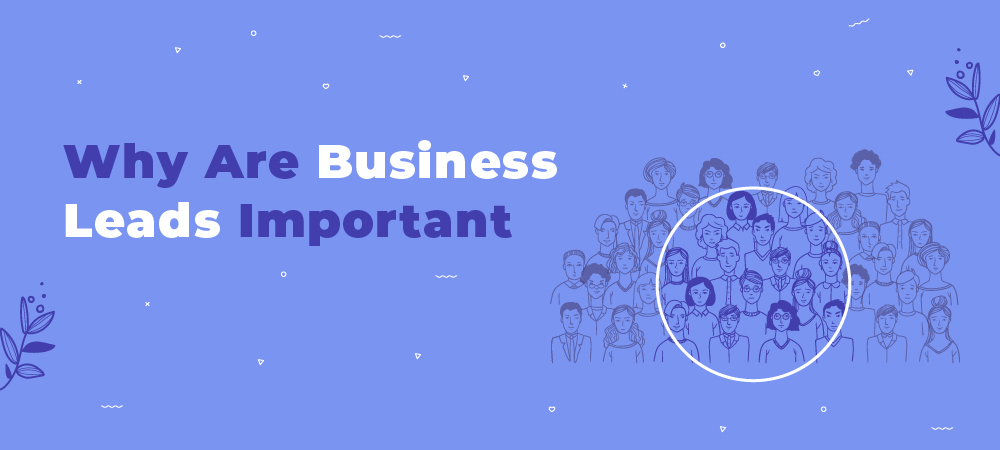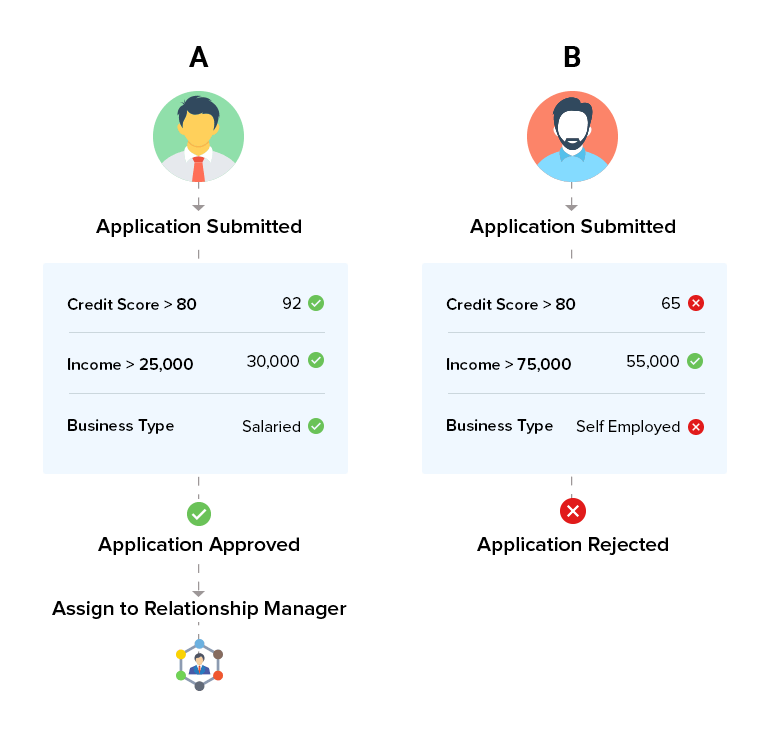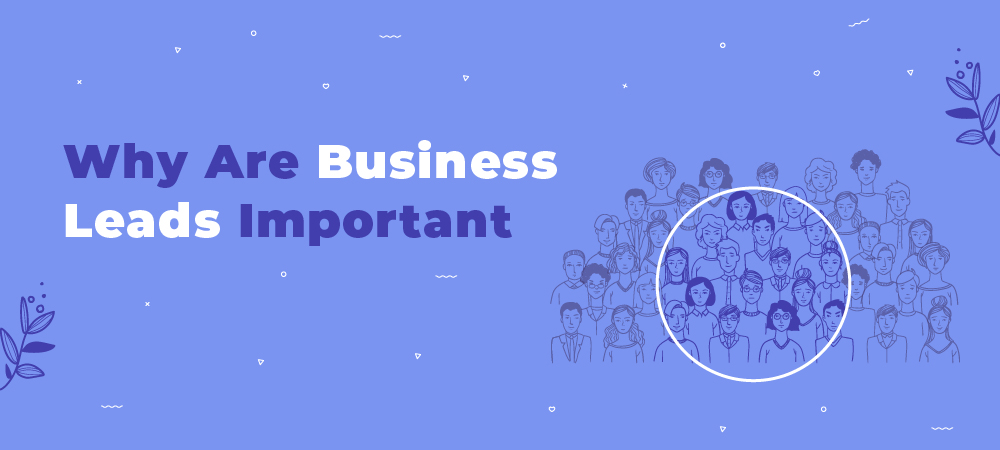No business can survive without customers, and businesses should be proactive in filling their sales funnel with viable business leads. The type and quality of your business lead can make a major difference in how you grow your sales, and companies should understand the lead’s role and expectations in your sales process so you can be prepared to leverage every opportunity.

Business Lead Definition
By definition, a business lead (or sales lead) is a person who is interested in the product or service you sell. Companies generate leads from a variety of sources, then follow up with each one to see if the business lead is a good fit for what they sell.
Getting leads is the first step of the sales cycle and will help you know who to stay in touch with and who to continue marketing to until they’re ready to buy.
Why are Business Leads Important?
Lead generation is a major component of any sales-led organization. Without business leads filling your sales funnel, sales reps are at a loss as to who to contact and try to sell to.
Ideally, lead generation occurs organically. When a complete stranger reaches out on their own volition and shows interest in your product, the relationship grows naturally and gives you a better chance to build authentic connections.
However, old-school lead gen techniques like cold calling and cold emailing can also prove effective when done correctly.

How to Get Business Leads
In most sales organizations, marketing is responsible for generating business leads. Marketing teams will create lead magnets, paid advertisements, and other content to attract leads, then pass them on to sales team members.

Here’s a quick look at where business leads come from:
Email Marketing
Whether you use lead magnets to build your email list or connect with people who already know your company and brand, email marketing can be a powerful lead nurturing outlet. Once you receive a business lead, you need an easy way to continue the conversation. Sending email is inexpensive, and studies show that email can generate up to $44 per $1 spent. (Source: https://www.campaignmonitor.com/blog/email-marketing/2018/12/70-email-marketing-stats-you-need-to-know/)
[Also Read: 15 Essential Email Marketing KPIs]
Social Media
Social media platforms can be a gold mine when it comes to business lead generation. From paid advertising on Facebook to direct messages, you can personalize the experience and build your brand image in the process.
You can also use LinkedIn Ads to find business leads.
Paid Ads
Search engine advertising isn’t the most original or glamorous way of generating leads, but it’s still highly effective. One study found that Google Adwords users made $2 for every $1 they spent, so it’s worth exploring as a way to keep your sales funnel full. You can set your own budget to keep costs under control, and in some cases, you only pay when a user converts.
Content
Blogs, infographics, case studies, and webinars are just a few examples of how you can attract business leads online. Effective content should solve business problems and make you look like an expert in your industry.
Retargeting
When a user visits your website and doesn’t take action, you can enlist the help of retargeting to stay top of mind and encourage them to revisit your website. Retargeting is simply the process of advertising to users who visited your website but didn’t convert. By staying on their radar, you stand a better chance of having leads remember you and engage with you when it’s more convenient for them.
What to Do When You Get a Business Lead
Once you get a business lead, there are few things that need to happen before you start your sales pitch. Follow this process to save time in your sales cycle and have the best chance of gaining an optimal outcome:
Qualify
Not all leads are a good fit for what you sell. Before handing leads over to your sales reps, you should qualify them to ensure they’re ready and able to buy. Trying to sell to a lead that’s not ready to pull the trigger can be a major time waste for the salesperson. If leads aren’t serious about the solutions you provide (at least not yet), then let marketing continue to warm them up until they’re ready to work with a salesperson.

Score
Qualified leads don’t always carry equal weight. Lead scoring is the process of ranking leads based on their likelihood to close. The higher the score, the better chance sales reps have of closing the deal.
Lead scoring allows sales reps to focus on their best opportunities first so that hot leads don’t have a chance to cool down before they speak to a rep. When sales reps can spend more time with their best leads, they can make better use of their time and close more deals.
[Also Read: 15 Smart Sales Closing Techniques]
Distribute
Once leads have been reviewed, they’ll need to be assigned to a sales rep. This process is also known as lead distribution. Some companies automate this process, but if you don’t have the right tools, you’ll need to figure out how sales reps will receive their leads. Some companies will put reps in charge of different products, while others will assign leads based on rotation.
Follow Up
Regardless of where a lead stands in the sales cycle, all leads should receive some form of follow up after entering your sales funnel. Good follow up practices is essential to sales, as the sales reps that prioritize multiple follow-ups tend to see the most sales. Studies show that the majority of salespeople stop reaching out after the first follow up message, but it usually takes five or more attempts before a sale is made.
Using follow up best practices in your sales organization can ensure that all leads are treated fairly and consistently so that no opportunities fall through the cracks.
LeadSquared automates the entire lead management process so you can spend less time on tasks and focus solely on selling. Try LeadSquared free for 15 days and see how it can help you turn your business leads into paying customers!







